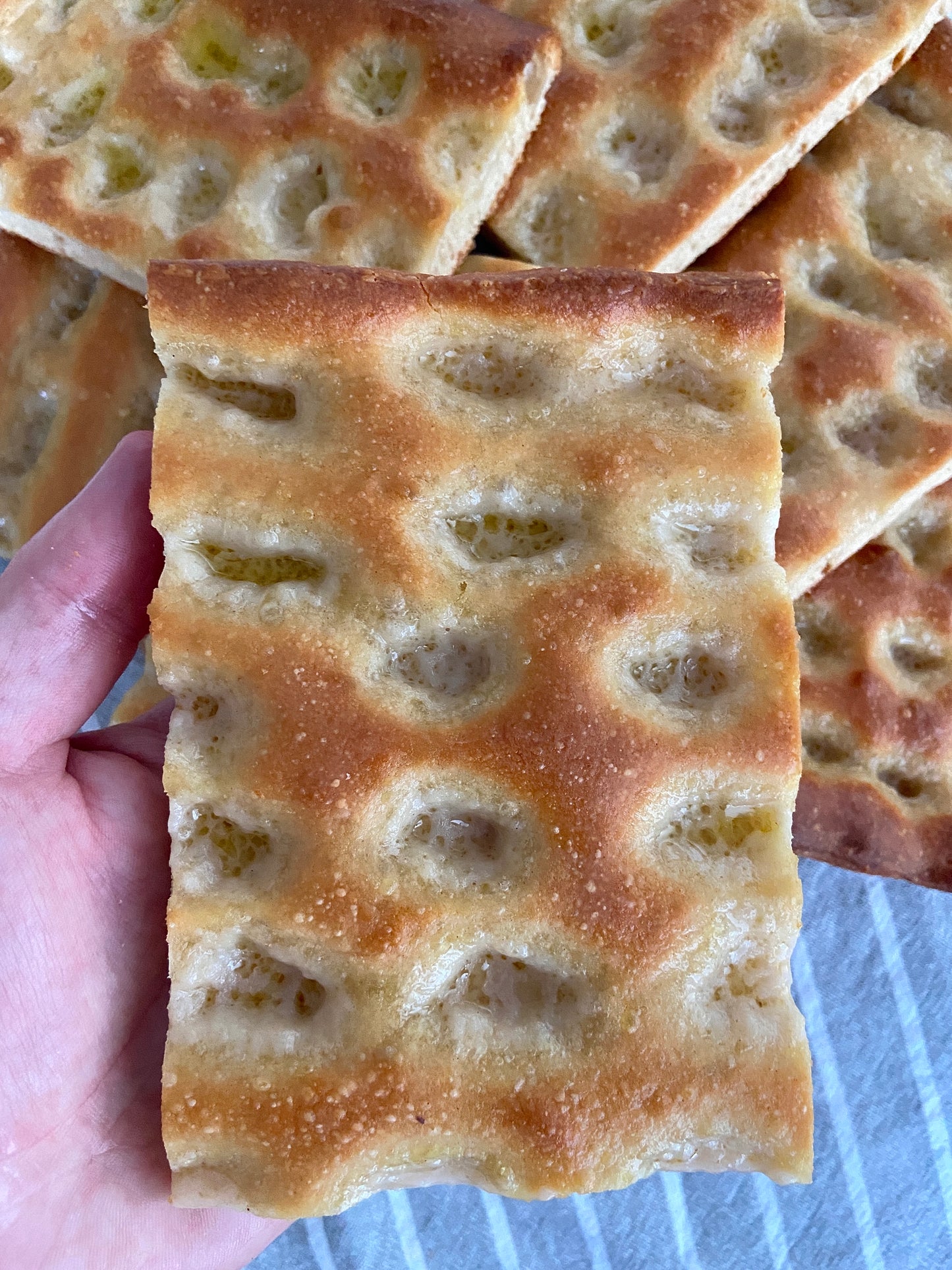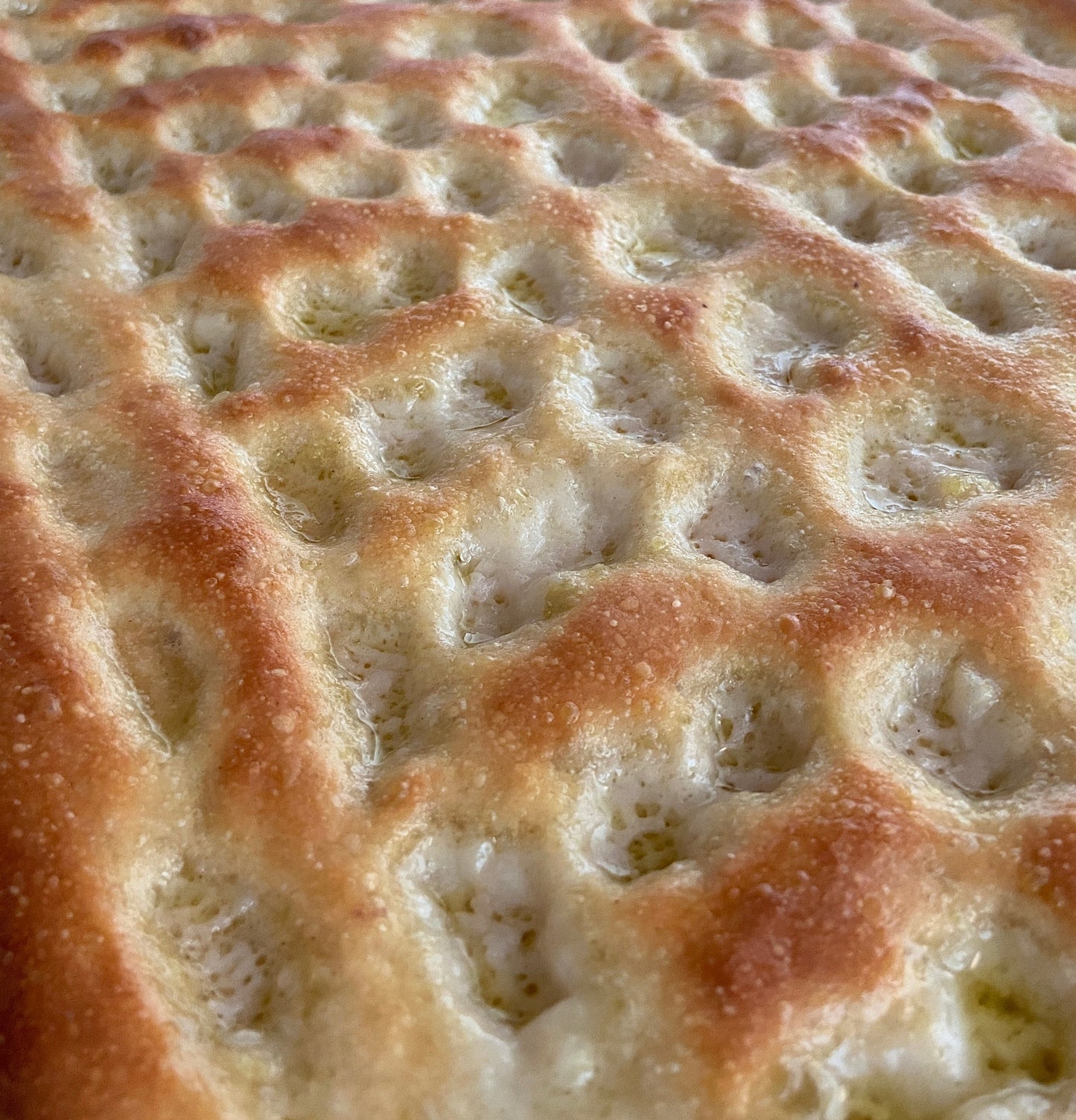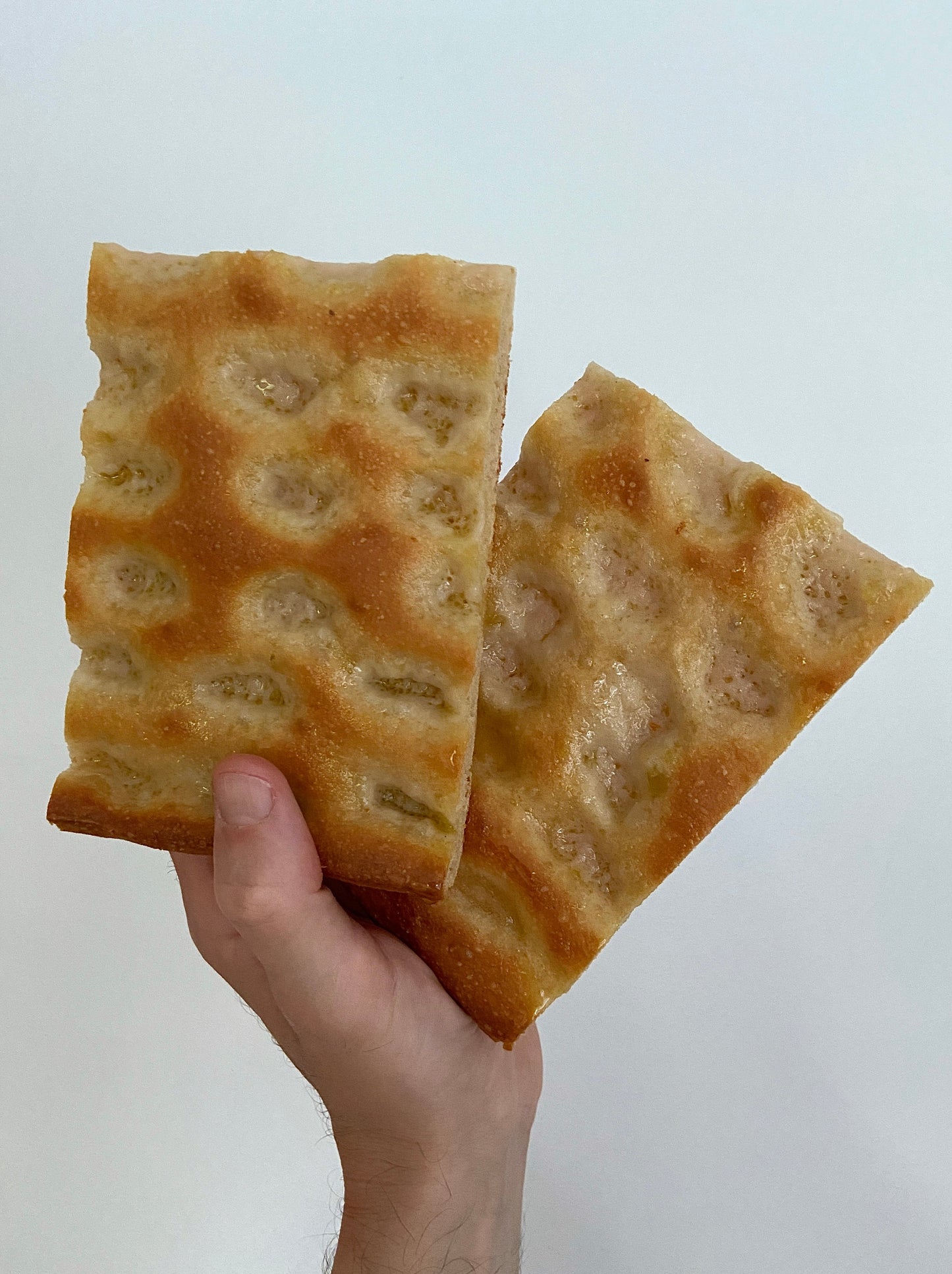1
/
of
3
Genoese focaccia
Genoese focaccia
VIDEO RECIPE
USEFUL INFORMATION
Yield
Yield
8 slices
Baking
Baking
230C • 20 min.
Mould/Tray
Mould/Tray
30 x 40cm
Ingredients
Ingredients
For the focaccia:
- 180ml Water
- 20g Extra virgin olive oil
- 5g Malt or sugar
- 1/2 tsp Dry yeast
- 320g Bread flour (W350)
- 5g Non-iodised salt
For the brine:
- 100ml Water
- 30g Extra virgin olive oil
- 1 tsp Salt
Method
Method
- Dissolve the yeast in the water, with the malt (or sugar) and the extra virgin olive oil
- In a separate bowl, weigh the flour and salt. Stir to make sure the salt is well distributed in the flour
- As soon as the yeast dissolves, pour the liquid mixture onto the flour and start kneading
- Work for at least 5 minutes until all the liquid has been absorbed by the flour
- Leave to rest at least half an hour with a tea towel on top
- After half an hour, knead the dough lightly to make it smoother and give it some strength
- Another half hour of rest, before opening it into a rectangle shape. Then fold the ends towards the center and then proceed with rolling up the dough
- You can then shape it into a ball again, before putting it back to rest for half an hour
- Roll out the dough with a rolling pin and place it in a tray that’s been oiled
- Dust with a little flour and then leave to rest for another half hour
- After that, make sure that the dough also covers the edges well and dust again with flour: this is essential to create the crunchy/tender effect typical of Genoese focaccia
- Prick the focaccia with your three central fingers and then cover with the brine
- Leave to rest uncovered until doubled in volume: depending on the internal temperature, this may vary. If the kitchen is below 21 degrees, put the dough to rest in the oven with the light on
- Bake at 230 for 20 minutes and spread a bit of oil over the surface at the end of baking, to give it a shinier look. If necessary, make sure to turn your baking tray half way through baking, to obtain a more uniform colour
Notes
Notes
It is always better to use less yeast and have to let the dough rest longer to rise, this improve the digestibility of the final product
Share






